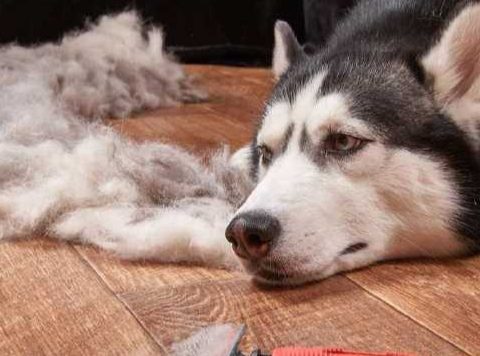In the nature of the dog, i.e., has a high degree of learning ability, understand the signal, and has the power of association, can be signals and specific actions or work, but not blind obedience, can decide for themselves do not want to do something (so sometimes call it will ignore you), but it lacks of abstract conceptual reasoning, so it is unable to time separate the two things to do a coherent counterpart.
Young puppies have not yet established behavioral patterns, or “bad habits”, and the education they receive at this time is the basis for determining their behavior for the rest of their lives. Of course, having a well-behaved dog as a model is a very convenient way to learn.
Let your puppy understand that training is fun, teach your puppy basic commands in a fun way, integrate training into your daily life, and train your puppy in a timely manner for life activities to teach good behavioral lessons, such as: sit, lie down, wait.
When its behavior is wrong, say “no” firmly. Correct the behavior and praise the puppy.
For example, if the dog is jumping on the couch, say “No!” and put him down, and once the dog is on the floor, praise him “‘Good dog!” Once the dog is on the floor, praise him “‘Good dog! Remember that puppies have very short memories, so it is consistent and important that bad behavior be corrected immediately. If you are teaching your puppy to stay off the furniture, it is important that every member of the family does it on the same command, otherwise the dog will become confused, and week after week, the dog will not be able to modify his behavior because he doesn’t know what he is doing wrong.
If you see your puppy chewing on your shoes, which is clearly a mistake, but you understand that it’s because the puppy is teething and needs to grind his teeth, how do you handle the situation? Remove the shoe and immediately say “No!” to the puppy. Then give your puppy something he can chew on like a chew toy and praise him at the same time.
Don’t hit your puppy, besides being cruel, hitting him will make him timid and fearful, and if you are hitting a large dog, he may feel threatened and bark at you or show aggressive behavior.
Therefore, the most important point, before training to understand the characteristics of the dog, can be guided by the dog’s ideas to go, by the daily life of the training, and then integrated into the interactive relationship between family members, rather than to react to the idea of human treatment, or violent means of scolding the dog to make the dog afraid to yield, so that instead of achieving the desired results, but rather, the cart is before the horse, futile and costless.
Now let’s introduce some simple life training
Name training
The first thing your dog needs to do when it enters your home is to be given a name. How do you get it used to the name that will follow it for the rest of its life? When he is happy to play, eat or be praised, attract his attention with a bright tone of voice and call his name several times, which will make him quickly adapt to the tone of voice referring to him.
Defecation training
After moving around, waking up, or eating, your dog will most likely go around and sniff the floor, which is a sign that it needs to defecate. At this time, take him to the toilet location you have decided, and praise him afterward. After a few times, he will remember where to go. When training is not yet completed, do not scold him for urinating and defecating, or even press his nose to the feces and ask him to remember the lesson, as this will only create a fearful mindset and it will be difficult to obey the command.
Night Barking Training
When a dog arrives in an unfamiliar environment, its mood is always unstable and it takes two or three days for it to get used to it. Therefore, they will often whine or bark at night. At this time, you can give them scented objects they have used before, safety toys, or an alarm clock with a regular sound (the ticking sound is like the sound of a heartbeat), or let them lie down in a place where they can see their owners, which will make them feel more at ease or divert their attention.
Feeding training
Try spending the first few days with your puppy, identifying yourself as the feeder, as food is the most important bait at this age, and you can quickly get your puppy to recognize you as the owner due to food orientation. Dogs like to have a regular feeding place and this reinforces the habit. Some dogs like to drag a piece of food from the bowl or pick up a portion of food and eat it out of the bowl, so remember to put newspaper on the floor. When there is more than one dog, they should be separated by a distance and have their own bowls to avoid uneven distribution.
When you are having a meal or eating, does your dog often look at you with begging eyes, “Good master, give me a piece” ….. or begs with a petulant voice. Please be ruthless in refusing its request, so as not to develop the bad habit of relying and begging for food when eating, or even worse, the bad habit of rummaging through garbage cans when the owner is not around.
Training your puppy should be fun, and using rewards will enhance the encouragement of your puppy’s behavior, and your puppy will have a happy attitude towards learning, being encouraged and rewarded for his efforts.
Learning will be a more enjoyable experience. It will also increase your dog’s trust and establish a stable relationship.

